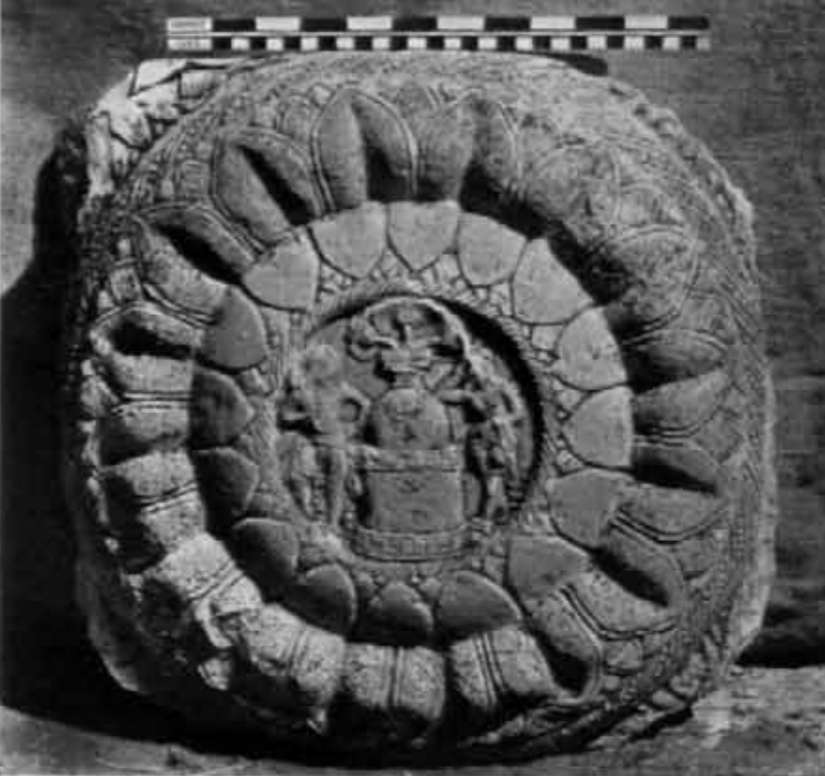Ter, Maharashtra on:
[Wikipedia]
[Google]
[Amazon]
Ter is a village in

Osmanabad district
Osmanabad District (pronunciation: Help:IPA/Marathi, smaːnabaːd̪ (Transliteration: Usmanabad Jil'hā), officially known as Dharashiv District, is an administrative district in the Marathwada, Marathwada region in the States and union te ...
of Maharashtra
Maharashtra () is a state in the western peninsular region of India occupying a substantial portion of the Deccan Plateau. It is bordered by the Arabian Sea to the west, the Indian states of Karnataka and Goa to the south, Telangana to th ...
state, India
India, officially the Republic of India, is a country in South Asia. It is the List of countries and dependencies by area, seventh-largest country by area; the List of countries by population (United Nations), most populous country since ...
. It is from the district headquarters, Osmanabad, from Latur.
History
The ''Periplus of the Erythraean Sea
The ''Periplus of the Erythraean Sea'' (), also known by its Latin name as the , is a Greco-Roman world, Greco-Roman periplus written in Koine Greek that describes navigation and Roman commerce, trading opportunities from Roman Egyptian ports lik ...
'' mentions a trading centre called Tagara, which has been identified with modern Ter.
There is an ancient miraculous idol of the 24th tirthankara
In Jainism, a ''Tirthankara'' (; ) is a saviour and supreme preacher of the ''Dharma (Jainism), dharma'' (righteous path). The word ''tirthankara'' signifies the founder of a ''Tirtha (Jainism), tirtha'', a fordable passage across ''Saṃsā ...
of the Jains
Jainism ( ), also known as Jain Dharma, is an Indian religion whose three main pillars are nonviolence (), asceticism (), and a rejection of all simplistic and one-sided views of truth and reality (). Jainism traces its spiritual ideas and ...
, Lord Mahavira
Mahavira (Devanagari: महावीर, ), also known as Vardhamana (Devanagari: वर्धमान, ), was the 24th ''Tirthankara'' (Supreme Preacher and Ford Maker) of Jainism. Although the dates and most historical details of his lif ...
,known as bhagwan Mahavir digamber Jain atishay kshetra more than 800 years old. The temple has unearthed inscriptions which say that the samavshara of lord Mahavir came to this place.
Ter, settled along both banks of the Terna River, is a historically important village in Osmanabad district some 32.19 km (20 miles) from the tehsil
A tehsil (, also known as tahsil, taluk, or taluka () is a local unit of administrative division in India and Pakistan. It is a subdistrict of the area within a Zila (country subdivision), district including the designated populated place that ser ...
s headquarters. Its antiquity traces as far back as the '''', wherein it is referred to as Satyapuri and in the ancient period of our history as Tagarnagar. It was mentioned in the Periplus of the Erythraean Sea
The ''Periplus of the Erythraean Sea'' (), also known by its Latin name as the , is a Greco-Roman world, Greco-Roman periplus written in Koine Greek that describes navigation and Roman commerce, trading opportunities from Roman Egyptian ports lik ...
as one of the two pre-eminent centres, along with Pratisthana, in modern Paithan in Aurangabad district. The Periplus says that all kinds of mercantile goods from throughout the Deccan Plateau
The Deccan is a plateau extending over an area of and occupies the majority of the Indian peninsula. It stretches from the Satpura Range, Satpura and Vindhya Ranges in the north to the northern fringes of Tamil Nadu in the south. It is bound ...
were brought to Tagara and from there conveyed in carts to Bharuch. It traded with the outside world, especially Greece and Rome; Roman coins recently discovered here lend weight to this fact.
It reached the height of its commercial prosperity during the Satavahana
The Satavahanas (; ''Sādavāhana'' or ''Sātavāhana'', IAST: ), also referred to as the Andhras (also ''Andhra-bhṛtyas'' or ''Andhra-jatiyas'') in the Puranas, were an ancient Indian dynasty. Most modern scholars believe that the Satavaha ...
period. Ter was the capital of one of the branches of the Silaharas, many of whose seals and coins depicting an elephant giving a bath to Mahalaksmi, the family deity of the silaharas, have been unearthed here. In the same way objects like potsherds, beads, garlands, combs, dolls, conch shells, old bricks and many ivory objects uncovered in the excavations undertaken at Ter and its environs throw valuable light not only on the history of the village but also on the cultural, architectural and various other aspects and accomplishments of the people who inhabited the region in ancient times. Deeper excavations are being carried in the hills around Ter, which are yielding valuable material. The remains discovered so far, point to a rich cultural heritage. Dr. Hiralal Jain in his Karandakacaritra, a Jain book, refers to caves near Osmanabad as Ter caves, as they are nearer to this village. In the mediaeval period, the village shot into prominence as a centre of religious propagation. The well-known saint of Maharastra, Gora Kumbhar, a contemporary of Saint Jnyanesvar, was a resident of this village and in his days it was frequently the scene of gatherings of saintly personages. Scholars of saint literature are of the opinion that Ter had a hand in the propagation of Bhagvat dharma.
Demographics
In 2011, the village had a population of 12,479 of whom 6,481 were male and 5,998 female, according to the 2011 Census of India.
References
{{reflist Villages in Osmanabad district